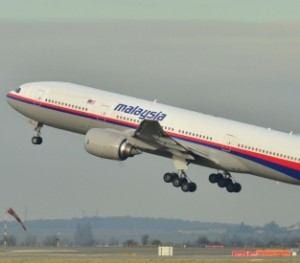The Travel Detective
Travel Detective Blog: Will MH370 Change Airline Flight Tracking?
 The latest on MH370 is that we may well be going into a long, quiet period of no new developments. The sad story here is that we may never know what happened on that flight, but the impact of MH370 could be long-reaching if it changes airline flight tracking rules.
The latest on MH370 is that we may well be going into a long, quiet period of no new developments. The sad story here is that we may never know what happened on that flight, but the impact of MH370 could be long-reaching if it changes airline flight tracking rules.
I still firmly believe it comes down to three possible scenarios that have not yet been refuted by the facts: a hijacking gone awry; a pilot suicide; or a gradual and fatal loss of pressurization in the cockpit that ultimately incapacitated the pilots….and none of those scenarios may ever be proven.
In the meantime, those depending on clues from the cockpit voice recorder (the CVR) may be quite disappointed when—or if—the CVR is ever located. In a best-case scenario, assuming the CVR is located and it has not been compromised by salt water or the intense pressures of water depths greater than 12,000 feet, we must remember that this device only gives investigators the last two hours of recorded voice communications inside the cockpit.
But the key to unraveling the mystery of Malaysia Airlines Flight 370 is in listening to the FIRST two hours of that flight, before the plane turned left, before the transponder was disengaged or disabled, and before the plane continued on a course over the Indian Ocean. The flight data recorder—which collects a wide range of information (temperature, altitude, speed, fuel consumption, engine performance)—could actually prove more useful, but would still not be conclusive.
Pings or no pings, black boxes or no black boxes, the most expensive search mission in history may ultimately come up empty, and the mystery of MH370 will continue…unsolved.
In the meantime, there is a growing movement to change some safety and equipment rulemaking—which will probably be started in the U.S. by the FAA, making it mandatory for any commercial airline flight in U.S. airspace to be equipped for continuous data and voice streaming to satellites. It would keep the black boxes on the aircraft as backups only.
I fully expect the FAA to issue that rule (which would then be immediately followed by similar rules issued by the CAA in the UK, and then by other government safety authorities worldwide). It’s a necessary rule. The only disappointment is that, if recent history is any indication, even when the FAA makes that rule, it will give the airlines at least 3 years to retrofit and install the new equipment.
Learn more from The Travel Detective about the disappearance of Malaysia Airlines Flight 370:
- Why were there no phone calls from the plane? Your MH370 questions answered
- The Travel Detective’s three theories on what could have happened to MH370
- What are the families of MH370 victims entitled to? A legal expert weighs in
By Peter Greenberg for PeterGreenberg.com.
Photo credit: Wiki Commons












